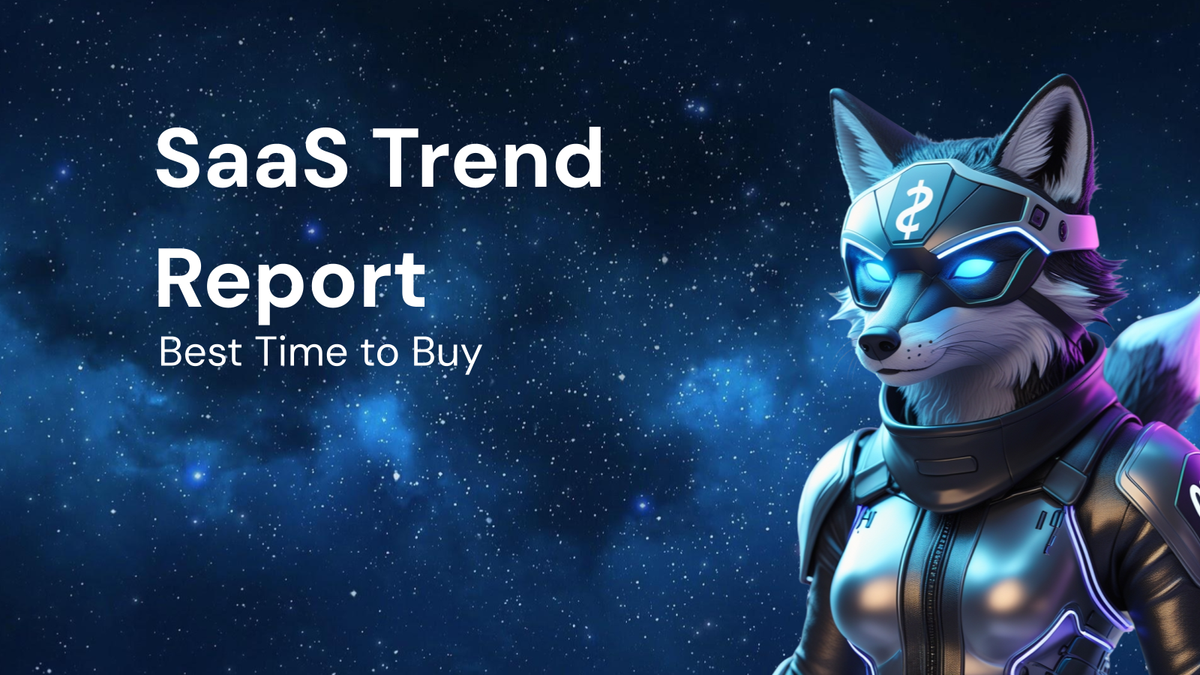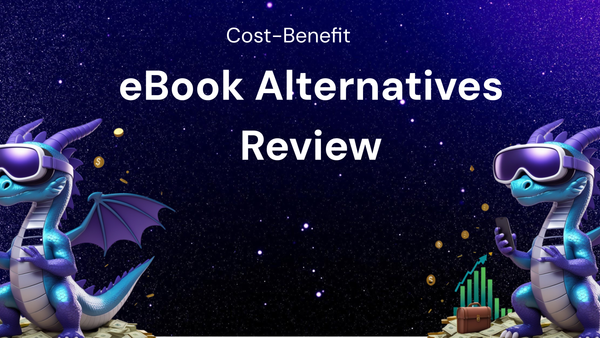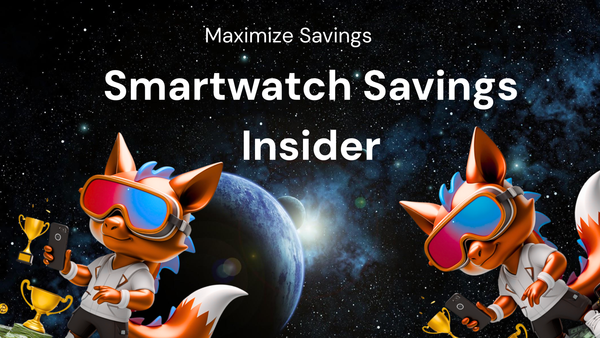SaaS Trend Report: When is the Best Time to Buy?

SaaS Trend Report: When is the Best Time to Buy?
The Software as a Service (SaaS) market is booming, projected to reach \$307.3 billion in 2026. This explosive growth means more choices than ever for businesses looking to leverage cloud-based solutions to streamline operations, boost productivity, and drive innovation. But with such a dynamic and competitive landscape, knowing when to buy SaaS can be just as crucial as what to buy.
This report delves into the key trends shaping the SaaS market, analyzing seasonal fluctuations, economic indicators, competitive pressures, and evolving buyer behavior to pinpoint the optimal times for SaaS procurement. By understanding these factors, businesses can maximize their return on investment, secure favorable pricing, and gain a competitive edge.
I. Understanding the SaaS Market Dynamics
Before diving into specific timelines, it's crucial to understand the forces driving the SaaS market:
- Continuous Innovation: The rapid pace of technological advancement fuels constant innovation in the SaaS space. New features, functionalities, and platforms emerge regularly, offering businesses ever-increasing capabilities. This constant evolution can create a "wait-and-see" mentality, but also presents opportunities to capitalize on cutting-edge solutions.
- Increased Competition: The low barrier to entry for SaaS development leads to a highly competitive market. Numerous vendors compete for market share, driving price wars and forcing companies to differentiate themselves through features, customer service, or niche targeting. This competition ultimately benefits buyers, providing more choices and negotiating power.
- Subscription-Based Model: The subscription model, a cornerstone of SaaS, creates recurring revenue streams for vendors and predictable expenses for buyers. This model fosters long-term relationships and incentivizes vendors to provide ongoing value to retain customers. Understanding the contract terms and renewal cycles is crucial for strategic SaaS procurement.
- Data-Driven Decision Making: SaaS solutions generate vast amounts of data, providing valuable insights into business performance, customer behavior, and market trends. This data can be leveraged to optimize processes, personalize experiences, and make more informed decisions. The demand for data analytics and integration capabilities is driving the development of more sophisticated SaaS platforms.
- Shift Towards Vertical SaaS: While horizontal SaaS solutions cater to a broad range of industries, vertical SaaS targets specific industry needs with tailored functionalities. This specialization allows for deeper integration with existing workflows and addresses unique challenges within a particular sector. The rise of vertical SaaS reflects a growing demand for customized solutions.
II. Seasonal Fluctuations in SaaS Buying Patterns
Just like retail, the SaaS market experiences seasonal ebbs and flows. Understanding these patterns can help businesses time their purchases strategically:
- Q4: The Year-End Push and Discount Season: The fourth quarter (October-December) is often the best time to buy SaaS. Several factors contribute to this trend:
- Budgetary Constraints: Many companies have remaining budget allocations to spend before the end of the fiscal year. SaaS purchases can be a strategic way to utilize these funds and secure necessary tools for the upcoming year.
- Sales Quotas: SaaS vendors are under pressure to meet their annual sales targets. They are more likely to offer discounts, promotions, and flexible payment terms to close deals before the year-end.
- Year-End Planning: Businesses use Q4 to plan their strategies and allocate resources for the coming year. Implementing new SaaS solutions during this period can help them start the new year with enhanced capabilities.
- Competition Intensifies: Vendors compete fiercely for year-end deals, leading to aggressive pricing and attractive bundled offers.
- Q1: Post-Holiday Lull and Strategy Refinement: The first quarter (January-March) typically experiences a slowdown in SaaS purchases.
- Budget Review: Companies often review their budgets and reassess their priorities after the holiday season. This can delay new SaaS implementations.
- Sales Team Re-Alignment: SaaS vendors often restructure their sales teams and adjust their strategies at the beginning of the year. This can lead to a temporary dip in sales activity.
- Focus on Implementation: Businesses that made SaaS purchases in Q4 often focus on implementing and integrating those solutions in Q1.
- However, this period can offer opportunities: While not as pronounced as Q4, Q1 can present opportunities for negotiating favorable terms with vendors who are eager to start the year strong. Focus on demonstrating clear ROI and long-term commitment.
- Q2: Renewed Momentum and Project Kickoffs: The second quarter (April-June) marks a resurgence in SaaS activity.
- Project Planning: Many companies initiate new projects and initiatives in Q2, requiring additional SaaS tools and resources.
- Budget Availability: Budgets are generally more readily available after the initial post-holiday review period.
- Summer Preparations: Some companies use Q2 to implement solutions that will improve efficiency during the summer months when employee availability may be reduced.
- Q3: Summer Slowdown and Back-to-School Focus: The third quarter (July-September) can experience a slight dip in activity, particularly in industries affected by summer vacations or back-to-school preparations.
- Summer Vacations: Decision-makers may be on vacation, leading to delays in the procurement process.
- Back-to-School Focus: Businesses in the education sector may prioritize back-to-school activities, shifting their focus away from SaaS implementations.
- However, targeted opportunities exist: Look for potential discounts from vendors targeting specific industries that remain active during the summer months.
III. Economic Indicators and SaaS Investment
The broader economic climate significantly impacts SaaS spending. Monitoring key economic indicators can help businesses anticipate market trends and optimize their purchase timing:
- GDP Growth: Strong GDP growth typically signals increased business activity and a greater willingness to invest in SaaS solutions. During periods of economic expansion, companies are more likely to adopt new technologies to support growth and efficiency.
- Interest Rates: Low interest rates can encourage borrowing and investment, potentially leading to increased SaaS spending. Higher interest rates may make companies more cautious about large capital expenditures, including SaaS subscriptions.
- Inflation: High inflation can erode purchasing power and force companies to cut costs. This may lead to a reduction in SaaS spending or a shift towards more cost-effective alternatives. Conversely, during periods of high inflation, businesses might invest in SaaS solutions to improve efficiency and reduce operational costs.
- Unemployment Rate: A low unemployment rate generally indicates a strong economy and increased business confidence, which can drive SaaS spending. High unemployment can signal economic uncertainty and lead to budget cuts, potentially impacting SaaS investments.
- Industry-Specific Trends: Monitor economic indicators specific to your industry to gain a more nuanced understanding of the market dynamics. For example, the healthcare industry's adoption of telehealth solutions is influenced by government regulations, reimbursement policies, and advancements in medical technology.
IV. Competitive Pressures and Negotiation Strategies
The highly competitive nature of the SaaS market empowers buyers with significant negotiating leverage. Understanding the competitive landscape and employing effective negotiation strategies can help secure favorable pricing and contract terms:
- Identify Competitors: Research and identify the leading SaaS vendors in your target market. Compare their features, pricing, and customer reviews to create a competitive matrix.
- Request Multiple Quotes: Obtain quotes from several vendors and use them to negotiate better deals. Inform vendors that you are considering multiple options to increase their willingness to offer discounts.
- Bundle Services: Consider bundling multiple SaaS solutions from the same vendor to leverage economies of scale and negotiate a lower overall price.
- Negotiate Contract Terms: Don't just focus on the initial price. Pay close attention to the contract terms, including renewal rates, cancellation policies, data ownership, and service level agreements (SLAs). Negotiate favorable terms that protect your business interests.
- Long-Term Commitment: Offering a longer-term commitment (e.g., a multi-year contract) can often result in a lower monthly or annual price.
- Freemium Models and Trials: Take advantage of free trials and freemium models to test out different SaaS solutions before committing to a paid subscription. This allows you to evaluate the software's suitability for your business needs and negotiate a better price based on your usage patterns.
- Be Willing to Walk Away: Don't be afraid to walk away from a deal if the terms are not favorable. The competitive SaaS market provides plenty of alternatives. Sometimes, simply indicating your willingness to explore other options can prompt a vendor to offer a better deal.
V. Evolving Buyer Behavior: Data-Driven Procurement
Modern SaaS procurement is increasingly data-driven. Businesses are leveraging data analytics and insights to make more informed decisions and optimize their SaaS investments:
- Usage Analytics: Track your usage patterns of existing SaaS solutions to identify areas for optimization and potential cost savings. This data can be used to negotiate better pricing or switch to a more appropriate subscription tier.
- ROI Measurement: Measure the return on investment (ROI) of your SaaS solutions to justify your spending and demonstrate the value they provide to your business. This data can be used to secure budget approval for new SaaS purchases.
- Benchmarking: Benchmark your SaaS spending against industry averages to identify areas where you may be overspending or underspending.
- Customer Reviews and Ratings: Read customer reviews and ratings on platforms like G2 and Capterra to gain insights into the experiences of other users. This can help you identify potential issues or challenges with specific SaaS solutions.
- AI-Powered Procurement: Emerging AI-powered procurement tools can automate various aspects of the SaaS procurement process, from identifying potential vendors to negotiating contracts. These tools can help businesses save time and money while making more informed decisions.
VI. Future Trends in SaaS Buying
The future of SaaS buying is characterized by increased sophistication, customization, and integration. Here are some key trends to watch:
- Composable SaaS: The move towards modular, API-driven SaaS solutions allows businesses to assemble customized technology stacks that perfectly fit their unique needs. This trend enables greater flexibility and agility.
- AI-Powered SaaS: Artificial intelligence (AI) is being integrated into SaaS platforms to automate tasks, personalize experiences, and provide deeper insights. This will lead to more efficient and effective SaaS solutions.
- Low-Code/No-Code Platforms: Low-code/no-code platforms empower businesses to build custom applications and integrations without requiring extensive coding knowledge. This democratizes software development and reduces reliance on traditional IT departments.
- Sustainability in SaaS: As businesses become more environmentally conscious, they are increasingly seeking out SaaS vendors that prioritize sustainability. This includes factors such as energy efficiency, data center location, and commitment to renewable energy.
- Focus on Cybersecurity: With the increasing threat of cyberattacks, businesses are placing greater emphasis on the security features and protocols of SaaS solutions. Vendors that prioritize cybersecurity will have a competitive advantage.
VII. Conclusion: Timing is Everything
Knowing when to buy SaaS can significantly impact your bottom line and give your business a competitive edge. By understanding the seasonal fluctuations, economic indicators, competitive pressures, and evolving buyer behavior in the SaaS market, you can strategically time your purchases to maximize your return on investment, secure favorable pricing, and gain access to cutting-edge solutions.
Key Takeaways:
- Q4 is often the best time to buy SaaS due to budget constraints and sales quotas.
- Monitor economic indicators to anticipate market trends and adjust your spending accordingly.
- Leverage competition by requesting multiple quotes and negotiating contract terms.
- Embrace data-driven procurement to make more informed decisions and optimize your SaaS investments.
- Stay informed about future trends to prepare for the evolving landscape of the SaaS market.
By embracing a proactive and informed approach to SaaS procurement, businesses can unlock the full potential of cloud-based solutions and drive sustainable growth in today's dynamic digital economy. Remember to tailor your strategy to your specific industry, business needs, and risk tolerance. The best time to buy SaaS is when you have done your research, identified the right solution for your needs, and are prepared to negotiate the best possible terms.




